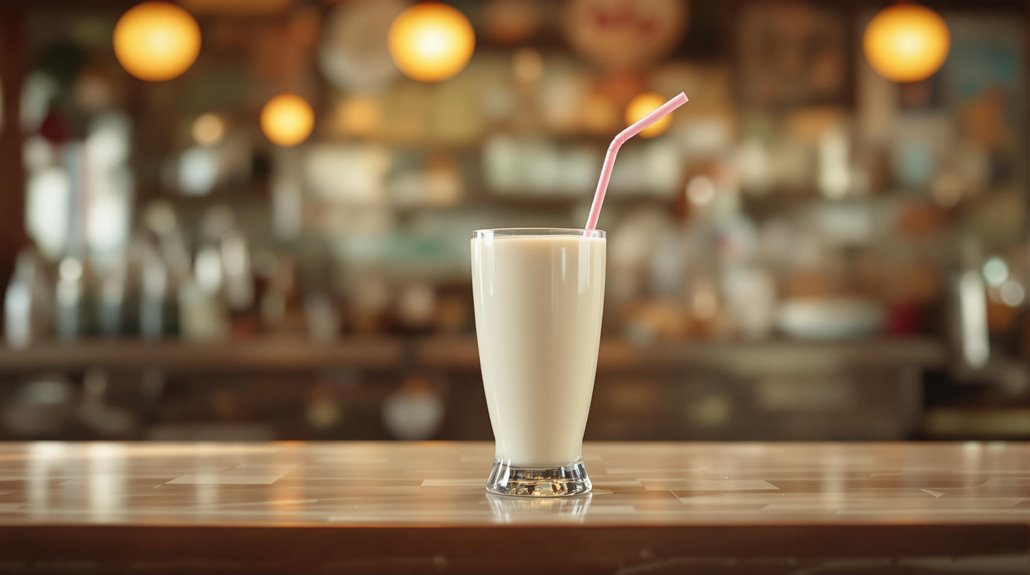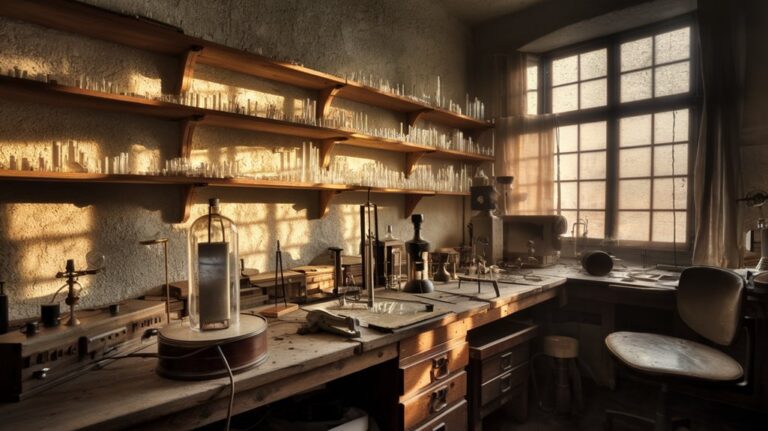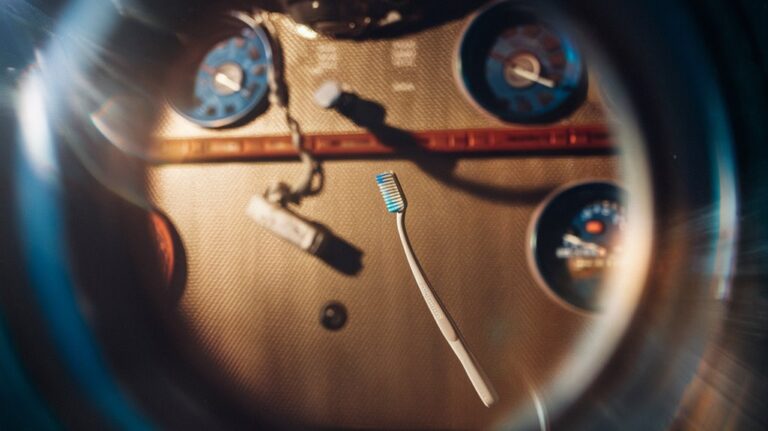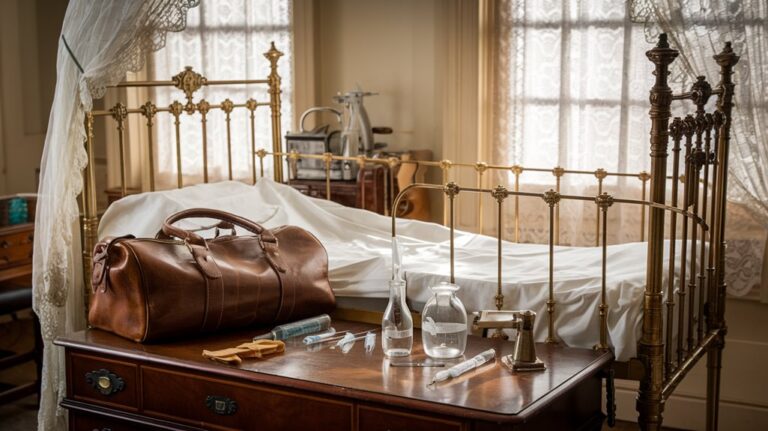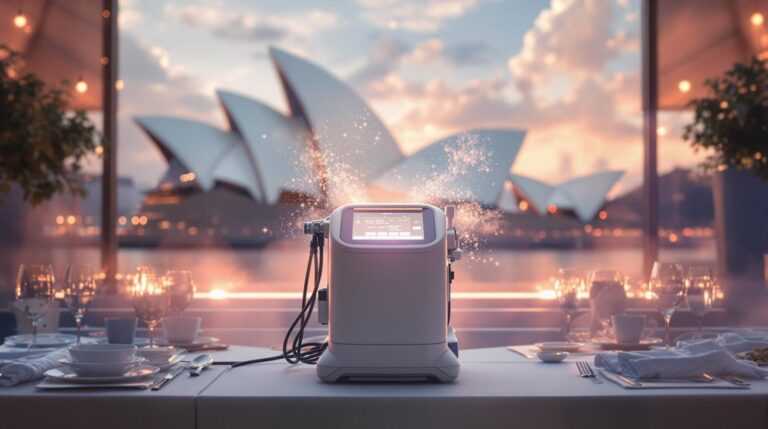Joseph Friedman’S Sip-And-See Moment: the Bendy Straw That Thrilled 1940S Kids
You've likely never given much thought to the humble bendy straw, yet this simple invention revolutionized the way an entire generation sipped their sodas and milkshakes. When Joseph Friedman watched his young daughter struggle with a rigid paper straw at the soda fountain in 1937, he didn't know his solution would transform dining for millions. What began as a father's desire to help his child would soon become one of the most quietly influential inventions of the 20th century.
The Spark Behind the Bendy Straw Revolution
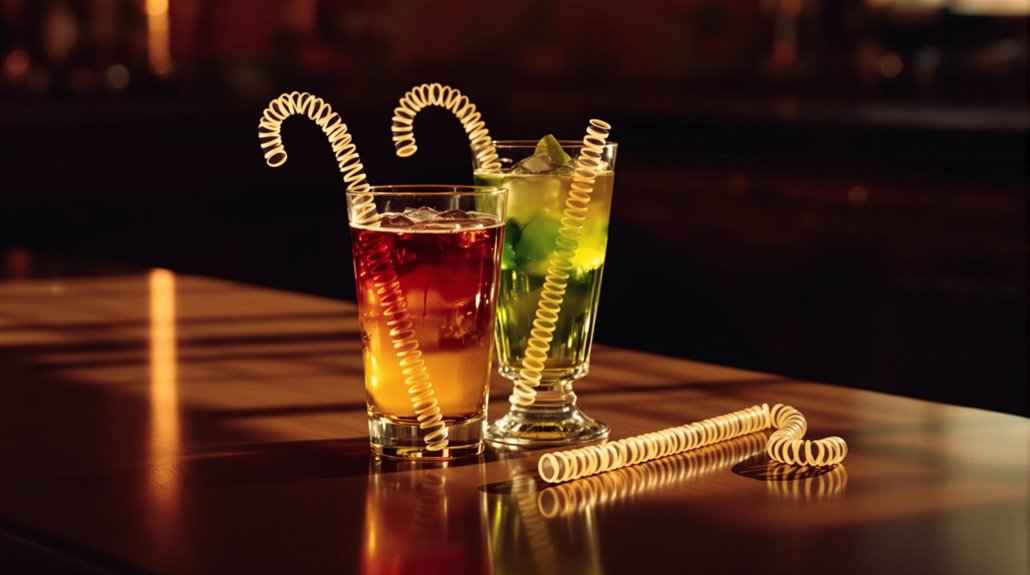
While watching his young daughter Judith struggle with a milkshake at his brother's San Francisco fountain parlor in the 1930s, Joseph Friedman noticed a common problem that would spark a revolution in drinking straws.
As he observed Judith's difficulty reaching her drink with a rigid straw, Friedman realized that drinking accessibility was a widespread issue affecting both children and hospital patients.
The existing straight straws, unchanged since their paper version was patented in 1888, offered no flexibility for users. When people tried bending them, the straws would crease and block liquid flow, or simply break down in drinks.
This childhood convenience challenge inspired Friedman, an established inventor with multiple patents, to envision a solution that would transform the way people sip their beverages. His solution came through a clever experiment using a screw and dental floss to create the perfect ridges for bending. His innovative design was officially recognized when he secured a patent in 1937.
From Dental Floss to Patent: Creating the Perfect Bend
Armed with his innovative vision, Joseph Friedman set out to create the first bendy straw prototype in his brother's fountain shop. Using a simple screw and dental floss, he wrapped the thread around the screw's grooves, inserted them into a paper straw, and created accordion-like ridges that allowed the straw to bend.
The initial design wasn't perfect – the helical winding didn't create a clean bend. You'd find Friedman tirelessly refining his invention, switching to concentric indentations and adding microcrystalline wax for stability. The idea for this revolutionary invention came when he watched his young daughter struggle with a straw while trying to drink a milkshake. His success would come a decade later when the straws became popular in hospitals.
His dedication to perfection led him through the patent process, filing his first "Drinking Tube" patent in 1937, followed by an improved design in 1951. Despite the manufacturing challenges that lay ahead, Friedman had successfully transformed a simple observation into a groundbreaking invention that would revolutionize the way we drink.
A Father's Solution Becomes a Hospital Helper
After observing his daughter struggle with a rigid straw at the Varsity Sweet Shop, Joseph Friedman never imagined his simple solution would transform hospital care. His father's ingenuity led to the first Flex-Straw sale to a hospital in 1947, where medical staff quickly recognized its potential for bedridden patients.
You'll find the flexible straw's hospital convenience revolutionized patient care, especially for those unable to sit up or facing mobility challenges. The bendable design allowed patients to drink from various positions, reducing spills and aspiration risks. He ingeniously created the flexible design by wrapping dental floss around a screw to form the straw's corrugations. Today, while many hospitals maintain plastic straws for patient care needs, they're actively exploring eco-friendly alternatives.
With an estimated 2 million plastic straws used annually in hospitals before eco-friendly alternatives emerged, Friedman's invention became an essential healthcare tool. What started as a solution for his daughter evolved into a significant medical innovation, improving the quality of life for countless patients.
Breaking Into the Post-War Market
Despite post-war material shortages, Friedman's Flexible Straw Corporation persevered through manufacturing challenges in the late 1940s. You'd find him constantly adapting to scarce machine parts, using creative substitutes to keep production moving forward. The process drew from his early prototype where he used a screw and dental floss to create straw corrugations.
By the decade's end, he'd completed his first flexible manufacturing machine, just as the post-war economy shifted toward consumer goods.
The company's initial marketing strategy targeted hospitals in 1947, highlighting the straws' sanitary and shatterproof qualities.
Betty Friedman then established a nationwide distribution system, expanding into home and child markets throughout the 1950s. The business structure evolved too, with financial backing from brothers-in-law Harry Zavin and David Light, plus family associate Bert Klein.
How the Flex-Straw Changed American Dining
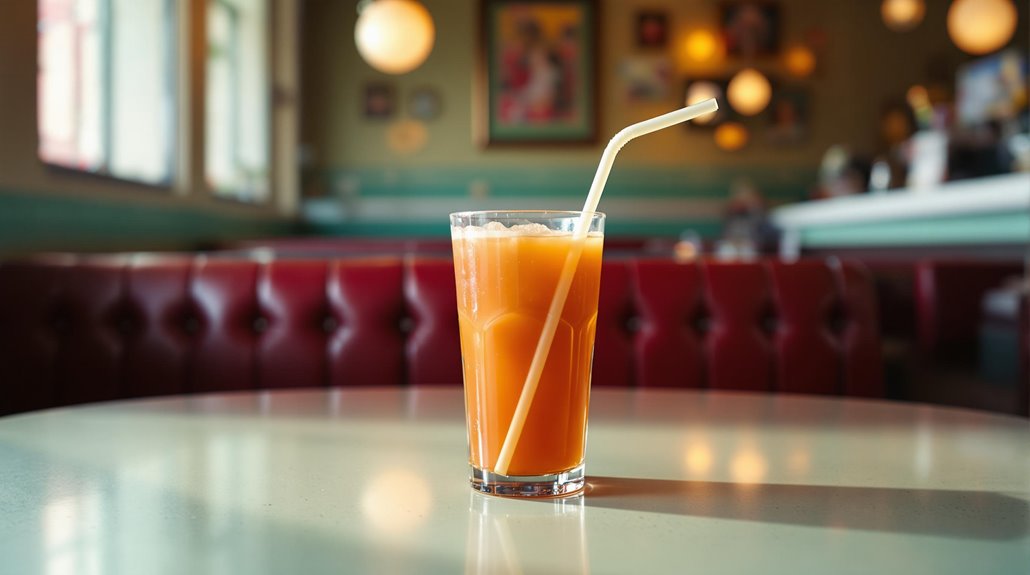
When Joseph Friedman's flexible straw hit restaurants and hospitals in 1947, it revolutionized the way Americans consumed beverages.
You'd find dining accessibility transformed as bedridden patients could finally drink comfortably, while restaurants saw fewer spills and improved hygiene as lips stayed away from glass rims.
The innovation reshaped beverage enjoyment across the food service industry. This groundbreaking design came after Friedman used screw and floss to create the first prototype.
You could now savor thicker milkshakes and elaborate cocktails, while restaurants benefited from reduced costs compared to reusable straws.
The flex-straw made drinking while reclining socially acceptable and relaxed formal dining restrictions for children.
Its impact extended beyond convenience – it sparked the to-go drink culture, became essential in fast food combos, and made sharing drinks among friends more common.
The simple bend in the straw had permanently changed American dining habits. His invention received U.S. patent 2,094,268 on September 28, 1937.
The Lasting Impact of a Simple Innovation
Joseph Friedman's bendy straw stands as one of the earliest examples of universal design, creating ripples far beyond its simple premise.
You'll find its impact on universal accessibility revolutionized drinking for everyone, from hospital patients to children sipping milk at the dinner table.
The innovation sparked remarkable economic growth, transforming from a hospital supply into a multi-million dollar consumer product.
Initially inspired by watching his daughter struggle with a straw, Friedman's invention would go on to change how people drink beverages forever.
Consider these lasting effects:
- Made independent drinking possible for bedridden and disabled individuals
- Created an entirely new manufacturing industry with the Flex-Straw Co.
- Inspired future innovations like candy straws and crazy straws
- Set a precedent for designing products that serve both specialized needs and mainstream consumers
Using a screw for ridges, he developed a simple yet ingenious way to make straws bendable.
Today, while we debate the environmental impact of plastic straws, Friedman's original design continues to influence how we think about inclusive product development.

